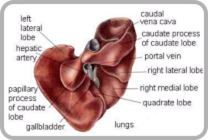The Institutes are well known for several organ transplantation procedures such as liver transplants, kidney transplants, corneal transplants, heart transplants, intestinal and GI transplants, pancreatic transplants and pediatric transplants.
Types Of Liver Transplant
Cadaver donor:
The donor liver is obtained from a person who is diagnosed as brain
dead, whose family volunteers to donate the organ for transplantation. People who receive cadaver donors wait on the institutional / regional list until a suitable donor becomes available. The waiting times vary.
Living donor:
A healthy family member, usually a parent, sibling, or child, or someone emotionally close to you, such as a spouse, volunteers to donate part of their liver for transplantation. The donor is carefully evaluated by the team to make sure no harm will come to the donor or recipient.
Auxiliary transplantation:
Points To Remember
- Liver transplantation is surgery to remove a diseased or injured liver and replace it with a healthy one from another person, called a donor.
- If your liver stops working as it should, you may need a liver transplant.
- In adults, the most common reason for needing a liver transplant is cirrhosis. Cirrhosis can be caused by many different types of diseases that destroy healthy liver cells and replace them with scar tissue. Some causes of cirrhosis are long-term infection with the hepatitis C virus, drinking too much alcohol over time, and autoimmune and other liver diseases.
- In children, the most common reason for needing a liver transplant is biliary atresia. In biliary atresia, bile ducts in the liver are missing, damaged, or blocked. As a result, bile backs up in the liver and causes cirrhosis.
- Your doctor will decide whether you need to go to a liver transplant center to be evaluated by a liver transplant team. The transplant team will examine you and run blood tests, x rays, and other tests to help decide whether you would benefit from a transplant.
- People with the most urgent need for a new liver to prevent death are at the top of the national waiting list. Many people have to wait a long time to get a new liver.
- Most livers come from people who have just died. This type of donor is called a deceased donor. Some transplants involve living donors who donate part of their liver, usually to a family member.
- Liver transplant surgery can take up to 12 hours. You will stay in the hospital about 1 to 2 weeks after surgery.
- Problems after surgery may include bleeding, infections, and rejection of the new liver.
- Rejection occurs when your immune system attacks the new liver. After a transplant, it is common for your immune system to try to destroy the new liver.
- After a liver transplant, you must take anti-rejection medicines for the rest of your life to keep your body from rejecting your new liver.
- Liver transplants usually work. Most people are able to return to work and other normal activities after a transplant.




